 October 2, 2014 John E. Ross, KD8IDJ, Editor
| ||||||||
ARRL Website To Be Offline on October 3 Starting at 2000 UTC The ARRL website is scheduled to be offline on Friday, October 3, A "Down for Maintenance" message will appear for the duration of the outage whenever someone attempts to access www.arrl.org. Logbook of The World will remain accessible during the outage. All e-mail functionality will remain online -- only the website will be down for testing. ARRL Again Asks FCC to Elevate Amateur Service to Primary on 2300-2305 MHz In comments filed in response to an AT&T Mobility Petition for Rule Making seeking a new air-to-ground communications system on 2.3 GHz Wireless Communications Service (WCS) spectrum, the ARRL has once again asked the FCC to elevate the Amateur Service allocation at 2300 to 2305 MHz from secondary to primary. The Petition (RM-11731) asked the Commission to authorize an LTE-based in-flight connectivity service in the WCS "C" and "D" blocks (2305-2315 MHz and 2350-2360 MHz, respectively) for airlines and airline passengers. AT&T has asserted that restrictions on out-of-band emission and power limits to protect adjacent-band users make the use of the C and D blocks problematic. The wireless provider asked the FCC for rule changes to permit deployment of its service "using currently fallow spectrum" while also "preserving adequate interference protection to users of adjacent bands."
The League asserted in its comments that the FCC has, to date, "failed to protect Amateur Radio operations at 2300-2305 MHz from WCS out-of-band emissions." The ARRL said the band is "regularly and substantially utilized by radio amateurs" for weak-signal, long-distance communication and, only by circumstances -- a lack of a primary occupant -- has it been able to enjoy that segment as a de facto primary user. "The Commission's rules are quite clear that WCS licensees enjoy no entitlement to disrupt adjacent-band radio service operations," the ARRL commented. But, the League pointed out, previous FCC actions to expand mobile broadband devices left 2300-2305 MHz vulnerable to increased out-of-band interference that would be difficult or impossible to mitigate. The ARRL said amateur stations operating in the 2300-2305 MHz band would be unable to avoid interference from AT&T Mobility's proposed system, and that the FCC has refused to clarify the obligation of WCS mobile providers to avoid interference to Amateur Radio operations there. The ARRL objected to what it called the FCC's "practice of making allocation decisions which place incompatible uses in close proximity to amateur stations and then place on the amateur licensees the burden of avoiding the interference." Read more. ARRL Takes Issue with NTIA's WRC-15 Proposal for 5 MHz The ARRL is taking issue with the World Radiocommunication Conference 2015 (WRC-15) stance of the National Telecommunications and Information Administration (NTIA) with respect to an upgraded 60 meter Amateur Radio allocation. In response to WRC-15 agenda item 1.4, the NTIA has called for no change at 5250-5450 kHz. The League said in comments filed September 24 in IB Docket 04-286 that while it concurs with the NTIA's view regarding 5250 to 5275 kHz -- allocated to the radiolocation service for oceanographic applications at WRC-12 -- the rest of the agency's proposal is "unsupportable in light of actual domestic and international practice and contains assertions of incompatibility that are demonstrably not correct." The US has authorized Amateur Radio secondary operation on five discrete channels in the 5275-5450 kHz range for more than a decade, the ARRL pointed out, with no instances of unresolved interference to primary users.
The NTIA's position is at odds with the proposal for agenda item 1.4 previously adopted by the FCC's WRC-15 Advisory Committee (WAC). In January, the WAC recommended a secondary allocation to the Amateur Radio Service from 5275-5450 kHz, and the FCC indicated in a subsequent Public Notice that it could generally support this recommendation. The League called the NTIA's position "particularly puzzling" given the position of federal agencies, for which the NTIA manages spectrum, to allow what the ARRL called, "a more disruptive service (radiolocation) in the identical frequency range under consideration here less than three years ago." "Neither NTIA nor its constituent federal agencies have credibly or persuasively articulated why fixed and mobile systems in the 5250-5450 kHz range can withstand the demonstrated potential for interference from automated, wideband, HF oceanographic radars, but cannot withstand operation by trained, licensed operators using smaller bandwidths, actually monitoring the spectrum to be used before and during a transmission, and with the capability to shift frequency immediately to avoid incidents of interference with a primary service," the ARRL commented. The League asserted that the Amateur Service deserves "the same treatment" that NTIA proposed for HF radiolocation less than 3 years ago. "Proponents of a different treatment, particularly a channelized treatment or a no-change approach, have still not presented a compelling distinction between amateur operation and radiolocation that would justify a departure from the general policy followed by the United States at WRC-12," the ARRL concluded. The ARRL Foundation Invites Scholarship Applications for 2015-16 Academic Year The ARRL Foundation has begun accepting scholarship applications from eligible young radio amateurs pursuing post-secondary education. Individuals and clubs support many of the 80 scholarships, ranging from $500 to $5000, that are awarded annually. In addition, one applicant may be selected to receive the prestigious William R. Goldfarb Memorial Scholarship, a "gap" scholarship that assists with the cost of college throughout four academic years to earn a bachelor's degree in a business, computer, medical, nursing, engineering, or science-related field. Applicants for all scholarships must be active radio amateurs and must complete and submit the online application.
For 2014, the Foundation awarded 79 annual scholarships through 58 funds to young Amateur Radio operators, valued at $106,250. In addition, the Foundation Board selected 17-year-old Padraig Lysandrou, KC9UUS, of Bloomington, Indiana, as the 2014 recipient of the Goldfarb award. This fall, Padraig is attending Cornell University School of Applied & Engineering Physics. Students planning to apply for 2015 awards should first carefully review the eligibility requirements and scholarship descriptions. Although only one application per applicant is required, applicants may ask to be considered for as many of the scholarships for which they are eligible (some scholarships have geographic criteria or other requirements) Check off only the scholarships for which you would like to be considered. In addition to completing the online application, applicants must submit a PDF of their academic transcript from their most recently completed school year. Goldfarb Scholarship applicants also must submit a copy of their completed Free Application for Federal Student Aid (FAFSA). Applications are due January 31, 2014, by 11:59 PM Eastern Time. Awards winners typically are notified in mid-May by USPS mail and e-mail. Established in 1973 as an independent and separate IRS 501(c)(3) organization, the ARRL Foundation manages grant and scholarship programs to support the Amateur Radio community. All grants and scholarships are funded entirely by the generous contributions of radio amateurs, clubs and friends. Individuals, groups or clubs wishing to establish an ARRL Foundation Scholarship Fund should visit the ARRL Foundation website. For more information about ARRL Foundation scholarships, e-mail the ARRL Foundation or call 860-594-0348. ARRL Executive Committee to Meet October 4 A raft of regulatory-related items will confront the ARRL Executive Committee when it meets Saturday, October 4, in Memphis, Tennessee. On the list are several ongoing FCC proceedings that affect Amateur Radio, as well as international and organizational matters. Among other topics, the EC will mull strategies to improve the FCC's Amateur Radio enforcement program, consider the FCC regulatory fee structure for vanity call signs going forward, and review the status of various petitions that could hinder or limit Amateur Radio access to various portions of the UHF and microwave spectrum. Committee members also will discuss the status of preparations leading up to World Radiocommunication Conference 2015 and will review a proposal to license FEMA stations with distinctive call signs, similar to Military Recreation or club stations.
Among important Amateur Radio proceedings still awaiting FCC action that will come up for discussion are the League's Petition for Rule Making seeking a new allocation at 472-479 kHz and its petition to replace symbol rate limits on data emissions below 28.3 MHz with a 2.8 kHz maximum occupied bandwidth. The EC will consider a request for support from proponents of keeping open the High Frequency Active Auroral Research Program (HAARP) facility in Gakona, Alaska. The EC will also approve convention and club affiliation requests and recognize new ARRL Life Members. Actor Tim Allen Gets His Ham Ticket For Real Actor and comedian Tim Allen now not only plays an Amateur Radio operator on television, he is one! Allen got his Technician ticket on September 4, but did not release the news until this week. In his weekly ABC comedy TV show "Last Man Standing," Allen plays Mike Baxter, KA0XTT, and the show, which starts its new season October 3,
has featured ham radio in some episodes (Allen's TV daughter, Mandy Baxter, is KF0XIE). "Last Man Standing" producer John Amodeo, NN6JA, told ARRL that the agreement with Allen was that "we would not publicize his license until he approved it." Allen subsequently revealed to Tom Medlin, W5KUB, for one of Medlin's webcasts that he had passed his Technician license test but, per Allen's request, did not mention his call sign, Amodeo said. The call sign has since been disclosed elsewhere. "The Amateur Radio operators on the crew of 'Last Man Standing' are delighted that Tim has taken and passed his Technician exam and received his own, real call sign," Amodeo said. "It took more than 3 years to make it happen, and it started with Tim's personal interest in radio technology and his request to make the Mike Baxter character an Amateur Radio operator." The ham shack on the show is a working station.
More than 2 dozen members of the "Last Man Standing" crew -- and now Allen, its star -- have been inspired by the show's Amateur Radio component to get licensed. On September 28, the K6H "Hollywood Hamnado" special event station was on the air, with "Last Man Standing" crew members at the helm from the show's set. Amodeo said K6H went very well. "We had about 35 operators and guests on Stage 9 here at CBS Studio Center" he told ARRL. "All enjoyed being on the set of 'Last Man Standing.' The feeling was like a Field Day and a mini Hamvention." Amodeo said that all six K6H stations had "continuous contacts from start to finish." Most of the K6H event and several interview segments, including one with the VEs who administered Allen's test, have been posted on Medlin's website. Amodeo expressed gratitude to the ARRL for its "continued support," starting with the assistance of former ARRL Media and Public Relations Manager Allen Pitts, W1AGP, in the creation of the KA0XTT call sign and the more recent assistance of ARRL VEC staffers Maria Somma, AB1FM, and Amanda Grimaldi, KB1VUV. "We hope Tim will find Amateur Radio to be an enjoyable and useful hobby for many years to come," he added. W1AW Centennial Operations Will Be in Missouri and Virginia Starting October 8 (UTC) The ARRL Centennial W1AW portable operations taking place throughout 2014 from each of the 50 states and now in Alaska, California, and the District of Columbia, will transition at 0000 UTC on Wednesday, October 8 (the evening of October 7 in US time zones), to Missouri (W1AW/0) and Virginia (W1AW/4). W1AW has visited each of the 50 states for at least 1 week so far during 2014, and by year's end W1AW will have been on the air from every state at least twice.
Working W1AW/x from each state is worth 5 points per mode/contact, even when working the same state during its second week of activity. To earn the "Worked all States with W1AW Award," work W1AW operating portable from all 50 states. (Working W1AW or W100AW in Connecticut does not count for Connecticut. Participants must work W1AW/1 in Connecticut.) A W1AW WAS certificate and plaque will be available. An ARRL Centennial QSO Party leader board shows participants how many points they have accumulated in the Centennial QSO Party and in the W1AW WAS operations. Log in using your Logbook of The World (LoTW) user name and password, and your position will appear at the top of the leader boards. Results are updated daily, based on contacts entered into LoTW. ITU Secretary General Extends Greetings to IARU Region 1 Delegates In a video, International Telecommunication Union (ITU) Secretary General Hamadoun Touré, HB9EHT, extended his wishes for "every success" to International Amateur Radio Union (IARU) Region 1 delegates during their Regional Conference September 21-26 in Albena, Bulgaria. In the nearly 4-minute greeting, Touré said he appreciated the work of the IARU and for its support of ITU Headquarters station 4U1ITU. "I can assure you that IARU is a valuable member of the ITU family, and this relationship will be nurtured in the years to come," said Touré, who called Amateur Radio is "a very important public service."
Touré said that the ITU was donating an Icom IC-765 transceiver to IARU Region 1. "I am sure this transceiver will find a good use in the IARU Region 1 member societies," he said. Amateur Radio, Touré continued, is "a means of technical self-training for young people" as well as a national resource, "particularly in developing countries, and even provides support and relief in the event of national disasters." Next year, the ITU will celebrate its 150th anniversary, and Touré said that the ITU club station will identify as 4U0ITU to mark the occasion. He invited the Region 1 delegates to join the World Radio Day celebration next February 13, the anniversary of the first broadcast by UN Radio in 1948. "I assure you that my Amateur Radio hobby is very dear to me," concluded Touré, a native of Mali who assumed the Secretary General's post in 2007. "I look forward to meeting with you, personally or on the Amateur Radio bands. I wish you every success in your hobby and activity. Thank you for your support to ITU. 73." Ham Radio Saves the Day in the Yukon According to a Radio Amateurs of Canada (RAC) report, Amateur Radio bridged the gap recently for members of a search-and-rescue team attempting to locate a missing teenager in Canada's Yukon Territory. SAR team member Terry Hauff, VY1MAP, was unable to contact the team's headquarters in Whitehorse during the September 21 activation. He was out of cell phone range, and the satellite phone the team had was not working. VY1MAP was, however, able to reach a 2 meter repeater from his mobile station.
Vincent Charron, VE3XU, RAC's Director of Communications, commented, "Whether it's a natural disaster, major weather event, planned community event, or a missing person search, we at RAC receive numerous reports of Amateur Radio interventions when traditional communication systems fail. Ham radio is most certainly still relevant and provides a crucial communications back-up option, often in challenging/dire situations." -- Thanks to Radio Amateurs of Canada via Mark Bowers, VY1MAB RSGB Outlines "New" Islands on the Air (IOTA) Vision, Seeks Partnership Changes are in store for the Radio Society of Great Britain's popular Islands on the Air (IOTA) program, as the RSGB repositions itself to assume a less-direct role in the operating award program's management and administration going forward. The "New IOTA" will embrace the program's international scope and likely include some online means of confirming IOTA contacts and claiming contact credits. For the time being, however, everything will remain as it is. This past July, IOTA celebrated its 50th anniversary as "a premier DX program" under the guidance of the RSGB and IOTA Manager, Roger Balister, G3KMA. The program boasts some 2500 active island chasers and another 15,000 or so casual participants. In September the RSGB announced that it had asked IOTA management to enlist a group or organization from within the IOTA community to take the program into its next 50 years.
The RSGB announcement from President John Gould, G3WKL, said that a review of the program identified three primary issues. These include the program's current heavy reliance on a few key people, the need for modern, robust IT support that "will include online island credit submission akin to LoTW," and a requirement for a more friendly and accessible website. "The review accepted without question that all island and participant databases should be preserved and that any changes should be backwards-compatible," Gould's announcement said. "In addition, it was important to seek ways to rejuvenate and ensure the sustainability of the program. This vision we loosely called 'New IOTA.'"
"This approach acknowledges that the strength of the program lies with its national and international participants whom, we are assured, have the motivation, skills and enthusiasm to develop the program and to promote it to its full potential," Gould continued. "This way forward has the full support of the IOTA team and has been welcomed by the wider IOTA community both at home and abroad. " According to Gould's announcement, research and study to develop a plan for the "New IOTA" will take place over the next 9 months. Read more. FT4TA DXpedition Team Aims to Take Tromelin Off the Top 10 Most-Wanted Lists The FT4TA DXpedition to Tromelin Island is in its final stages of preparation, and in less than 1 month the six-man team will depart for the small French possession in the Indian Ocean. Operation is scheduled to commence on October 30 and continue until November 10. The DXpedition is the recipient of an ARRL Colvin Award grant. "I and about 10,000 of your 'best friends' will be tuned up and listening for you," Warren Croke, NW4C, quipped on the Tromelin2014 Facebook page. "Be safe and have fun."
The DXpedition has announced plans to be active on 160 through 10 meters on CW, SSB, and RTTY. "Openings toward the USA and Japan are short," the DXpedition has advised. "We will do our utmost to give this entity to worldwide deserving hams while openings last." The DXpedition has said that its operators will take into consideration information from their pilot stations regarding propagation and feedback from the Amateur Radio Community.
Operators are expected to concentrate on "the higher-volume bands," but will give a second priority to the low bands. Logs will be updated daily to ClubLog via a satellite connection, but there will be no leader board. An as-yet-unreleased postage stamp commemorating the 60th anniversary of the first Tromelin Island Amateur Radio operation will be applied to all direct, OQRS, or donor-requested QSL cards. In June, the FT4TA team shipped three boxes of gear to Réunion Island, and the DXpedition team members will fly between there and Tromelin. Read more. Past Sacramento Valley SCM, Santa Clara Valley SM, Pacific Vice Director Jettie B. Hill, W6RFF, SK Long-time ARRL Field Organization volunteer Jettie B. Hill, W6RFF, of Roseville, California, died September 21. He was 93. An ARRL Life Member, Hill served as ARRL Santa Clara Valley Section Communications Manager (later "Section Manager") from 1978 until 1982. He was the ARRL Pacific Division Vice Director in 1982 and 1983. Following his retirement in 1984, he relocated to Roseville and subsequently served as Sacramento Valley Section Manager from 1989 until 2000 and again from 2002 until 2006.
First licensed in 1938 in Eureka, California, Hill moved to the San Francisco Bay area after graduating from high school. He served in the US Army as a radiotelegraph operator at the Presidio during World War II. Subsequently he served in the US Navy (1944-1946 and 1950-1951). Hill graduated from San Jose State University and during his career was employed by United Airlines, Itek, Stanford Research Institute, Illumitronic Engineering, National Semiconductor and other firms. He was a member of the Sierra Foothills Amateur Radio Club. A serious DXer and CW operator, he was on the DXCC Honor Roll with 340 DXCC entities confirmed. He also had earned WAZ and 7-Band DXCC. Marte Wessel, K0EPE, and Pete Wessel, W0CM, SK A well-known Kansas Amateur Radio couple has passed on. Martha "Marte" Wessel, K0EPE, of Liberal, Kansas, died September 23. She was 89. Her husband Walter "Pete" Wessel, W0CM, died 6 days later on September 29 at age 101. Both were ARRL members. "Liberal has lost a YL legend and a lowband DX veteran," said ARRL Honorary Vice President Bruce Frahm, K0BJ, referring to the couple. Marte Wessel was on the DXCC Honor Roll. She oversaw the annual scholarship drive for the Young Ladies Radio League (YLRL), to which she belonged for 55 years and served on the President's Advisory Committee. The scholarship campaign she headed raised nearly $4600 this year.
"Martha was one of the cornerstones of the YLRL and of the Colorado-YLs, of which she was our last charter member," the YLRL website said in announcing her passing. An Ohio native, Marte Wessel belonged to the Ohio Ladies Amateur Radio Club (Buckeye Belles), the Quarter Century Wireless Association, Young Ladies International Single Sideband System, and the Quarter Century Wireless Women. She also was an avid bowler, a Red Cross "Grey Lady" volunteer, and a Camp Fire Girls leader. The YLRL has invited donations in memory of Marte Wessel to its scholarship fund to Linda Hynan, AC5QQ, 1312 Western Ridge Dr, Waco TX 76712. Pete Wessel, W0CM, a Nebraska native, was well-known as a low-band DXer and also was on the DXCC Honor Roll. A US Navy veteran, he was licensed in 1928 as 9EYE, and subsequently held W9EYE, W9JYW, and W0LYW. In addition to the League, Pete Wessel belonged to the Old Timers Club and was a Life Member of the Southern Plains Amateur Radio Klub. Pete and Marte Wessel had been married for 69 years. A Century of Amateur Radio and the ARRL At the 1983 Dayton Hamvention, volunteers administered Amateur Radio examinations for the first time, under FCC supervision, demonstrating the feasibility of a volunteer examiner system. The following year, the FCC began designating Volunteer Examiner Coordinators (the first was the Anchorage, Alaska, Amateur Radio Club VEC), including the ARRL VEC, now the largest and most successful. In June 1985, ARRL co-founder Clarence D. Tuska died. He was the last surviving pioneer of early organized Amateur Radio. Tuska was still a teenager and Hiram Percy Maxim was a well-known inventor in his 40s when they first met and eventually formed the League a century ago. Tuska, who went to a career in radio manufacturing and patent law, served as the ARRL's first secretary as well as the first editor of QST. The fascinating story of their early association and how it came about was told in the April 1989 issue of QST and recounted and updated in the January 2014 QST "It Seems to Us" editorial, "Present at the Creation."
On August 15, 1985, the FCC opened the 902 to 928 MHz band for amateur use. Also in 1985, the 10 MHz band (30 meters), one of the so-called "WARC bands," was opened for US amateur use. The band was one of those gained at the World Administrative Radio Conference 1979. Also in August 1985, astronaut Tony England, W0ORE, took along ham radio, including slow-scan TV, on a shuttle Challenger mission. His aim was to get youngsters involved in the space program and ham radio. On March 21, 1987, "Novice enhancement" came to pass, 12 years after the ARRL had first asked the FCC to implement it. Novice privileges were expanded to allow operation on 28 MHz SSB, 220 MHz, and 1270 MHz, as well as operation using RTTY, AMTOR, and packet. This was a giant step toward getting Novices more into the mainstream of Amateur Radio. During Field Day 1987, those new privileges allowed Novices to make contact with the Goodyear blimp Enterprise, thanks to KA4KVI, WB4RFC, and N4ORN, who had put a ham station on board.
The August 1987 QST reported an interesting solo hike by VE3HBF, 89 days on foot from the southwestern tip of England to extreme northeastern Scotland. A solo hiker, David was never alone. He had a 2 meter handheld with him, so that other hams could keep him company along the way, and so he could call for help, if needed. As he walked, he visited historic radio sites along the way, and was visited by other hams on several occasions. In 1987, Amateur Radio in the US celebrated the bicentennial of the US Constitution with "200" call signs for club stations, a "We the People" WAS, and other radio events. On January 1, 1988, the Canadian Radio Relay League became fully autonomous, ending its long-held status as a division of the ARRL. -- Al Brogdon, W1AB The K7RA Solar Update Tad Cook, K7RA, Seattle, Washington, reports: We saw a rise in solar activity this week. Last Friday and Sunday, September 26 and 28, the daily sunspot number was 203 and 200, respectively. This level of activity was last seen on July 4-8, when sunspot numbers were 199, 213, 256, 197, and 209. Geomagnetic indicators were stable, but the latest 45-day forecast shows some instability ahead.
Significantly, the GOES-15 X-ray background flux has been between C1.0 and C1.3 every day since September 25. We haven't seen this many days in a row of X-ray values at that level since last January. The latest forecast has solar flux at 150 and 145 on October 2-3, 140 on October 4-6, 135 on October 7-8, 140 on October 9-11, then 135, 130, 120, and 135 on October 12-15, then 150, 165, 170, and 165 on October 16-19, 160 on October 20-21, 165 on October 22-23, and 170 on October 24-26. Flux values are expected to rise to 180 on October 28-29, then fall below 120 after November 8. Predicted planetary A index is 8 on October 2-3, then 5 and 8 on October 4-5, 5 on October 6-14, then 8, 15 and 8 on October 15-17, and 5, 8, 10, and 20 on October 18-21, 15 on October 22-24, and 10 on October 25-27. This weekly "Solar Update" in The ARRL Letter is a preview of the "Propagation Bulletin" issued each Friday. The latest bulletin and an archive of past propagation bulletins is on the ARRL website. In Friday's bulletin look for an updated forecast and reports from readers, including a ham in Japan who runs never more than 0.5 W into antennas hung from his balcony. Send me your reports and observations. Just Ahead in Radiosport
See the ARRL Contest Calendar for more information. Upcoming ARRL Section, State and Division Conventions and Events
Find conventions and hamfests in your area. ARRL -- Your One-Stop Resource for
Subscribe to...
Free of charge to ARRL members...
| ||||||||
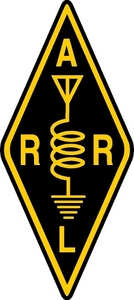 starting at 2000 UTC. The length of the outage could run for several hours and possibly into Saturday, October 4. The ARRL IT Department will be performing maintenance in the process of switching the site to a new server.
starting at 2000 UTC. The length of the outage could run for several hours and possibly into Saturday, October 4. The ARRL IT Department will be performing maintenance in the process of switching the site to a new server. "Notwithstanding this broad and nebulous claim, there is no showing anywhere in the four corners of the Petition that the proposed rule changes would permit any continued Amateur Radio operations on a secondary basis in the shared A block (2305-2310 MHz)," the ARRL commented on September 22. More to the point, the League said, there is no showing in the Petition that Amateur Radio operations in the adjacent 2300-2350 MHz band would be protected from increased out-of-band emissions, if the FCC were to implement the changes requested.
"Notwithstanding this broad and nebulous claim, there is no showing anywhere in the four corners of the Petition that the proposed rule changes would permit any continued Amateur Radio operations on a secondary basis in the shared A block (2305-2310 MHz)," the ARRL commented on September 22. More to the point, the League said, there is no showing in the Petition that Amateur Radio operations in the adjacent 2300-2350 MHz band would be protected from increased out-of-band emissions, if the FCC were to implement the changes requested.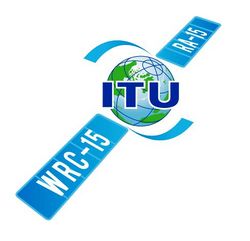 "Against this backdrop, the stated reason for the no-change proposal -- that '[e]xperience has shown that sharing is not possible between the Amateur Service and the fixed and mobile service' -- fails the straight-face test," the ARRL said in its comments.
"Against this backdrop, the stated reason for the no-change proposal -- that '[e]xperience has shown that sharing is not possible between the Amateur Service and the fixed and mobile service' -- fails the straight-face test," the ARRL said in its comments.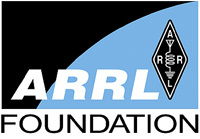 "This is a tremendous opportunity for students graduating from high school or currently enrolled in college to apply for a monetary award to help with their educational expenses," says ARRL Foundation Secretary and ARRL Development Manager Lauren Clarke, KB1YDD. "All ARRL Foundation scholarships are made possible by individuals or clubs. With these awards, donors hope to encourage young people to be active in Amateur Radio and to earn their degrees."
"This is a tremendous opportunity for students graduating from high school or currently enrolled in college to apply for a monetary award to help with their educational expenses," says ARRL Foundation Secretary and ARRL Development Manager Lauren Clarke, KB1YDD. "All ARRL Foundation scholarships are made possible by individuals or clubs. With these awards, donors hope to encourage young people to be active in Amateur Radio and to earn their degrees."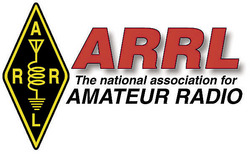 Also up for discussion will be the status of the ARRL's advocacy efforts on behalf of the Amateur Radio Parity Act of 2014 (H.R. 4969), which would call on the FCC to apply the "reasonable accommodation" three-part test of the
Also up for discussion will be the status of the ARRL's advocacy efforts on behalf of the Amateur Radio Parity Act of 2014 (H.R. 4969), which would call on the FCC to apply the "reasonable accommodation" three-part test of the 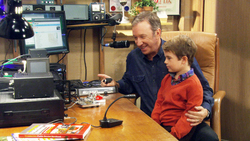
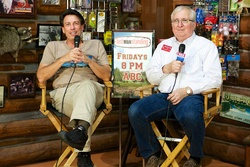
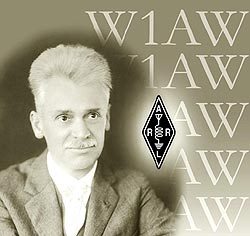 The
The 
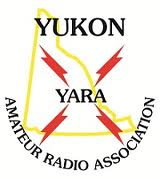 Hauff reached out to Ray Fugard, VY1RF, and Ron McFadyen, VY1RM, on the 146.88 MHz repeater in Whitehorse, and they were able to relay a report on the search status from the SAR command center some 35 km north of Whitehorse at Lake Laberge. The missing teen was eventually located unharmed. According to the RAC report, this marked the second time in as many months that Amateur Radio and Yukon Amateur Radio Association members and repeater infrastructure had proved invaluable in an emergency.
Hauff reached out to Ray Fugard, VY1RF, and Ron McFadyen, VY1RM, on the 146.88 MHz repeater in Whitehorse, and they were able to relay a report on the search status from the SAR command center some 35 km north of Whitehorse at Lake Laberge. The missing teen was eventually located unharmed. According to the RAC report, this marked the second time in as many months that Amateur Radio and Yukon Amateur Radio Association members and repeater infrastructure had proved invaluable in an emergency.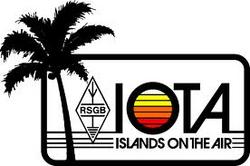 "The main focus will be on the development of online island credit submission (paperless QSLing) as a new feature of the programme," Balister explained in a September 27 post on the IOTA website. "The plan is then for this group to run IOTA in partnership with the RSGB. In the meantime no immediate policy, management or personnel changes are planned."
"The main focus will be on the development of online island credit submission (paperless QSLing) as a new feature of the programme," Balister explained in a September 27 post on the IOTA website. "The plan is then for this group to run IOTA in partnership with the RSGB. In the meantime no immediate policy, management or personnel changes are planned."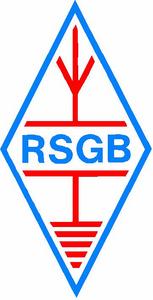 Gould explained that the RSGB is seeking a "partnership rather than a top-down approach," and that the RSGB Board has agreed that the IOTA team be invited to establish a group to develop and implement the "New IOTA" concept, with the RSGB providing seed money and "other appropriate support."
Gould explained that the RSGB is seeking a "partnership rather than a top-down approach," and that the RSGB Board has agreed that the IOTA team be invited to establish a group to develop and implement the "New IOTA" concept, with the RSGB providing seed money and "other appropriate support."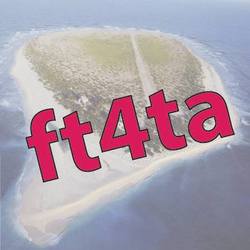 The FT4TA DXpedition said its operation is a chance to get Tromelin Island off the Top 10 most-wanted lists. Right now, it's number 8 (mixed) on the ClubLog
The FT4TA DXpedition said its operation is a chance to get Tromelin Island off the Top 10 most-wanted lists. Right now, it's number 8 (mixed) on the ClubLog 
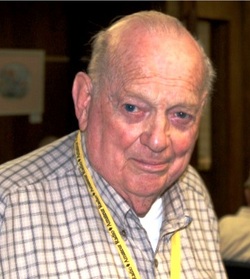
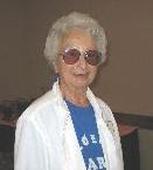
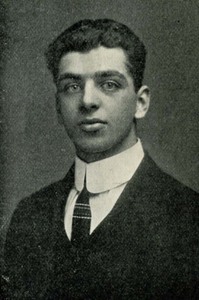
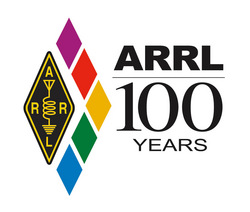 The results of a new ARRL contest were reported photographically in the April 1987 QST -- "The Messy Shack Photo Contest." Winners in each of the nine categories truly outdid themselves, making our hearts swell with admiration and pride at our fellow amateurs' efforts.
The results of a new ARRL contest were reported photographically in the April 1987 QST -- "The Messy Shack Photo Contest." Winners in each of the nine categories truly outdid themselves, making our hearts swell with admiration and pride at our fellow amateurs' efforts.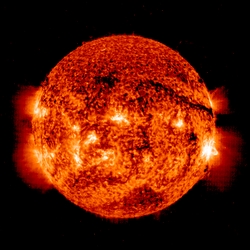 Average daily sunspot numbers increased from 80.9 to 170.1, and average daily solar flux rose from 128.3 to 168.9. This compares the current September 25 through October 1 reporting week with the earlier September 18-24 period.
Average daily sunspot numbers increased from 80.9 to 170.1, and average daily solar flux rose from 128.3 to 168.9. This compares the current September 25 through October 1 reporting week with the earlier September 18-24 period.







